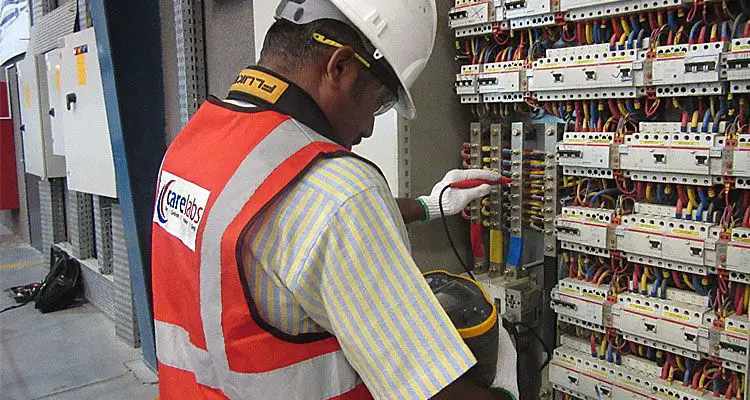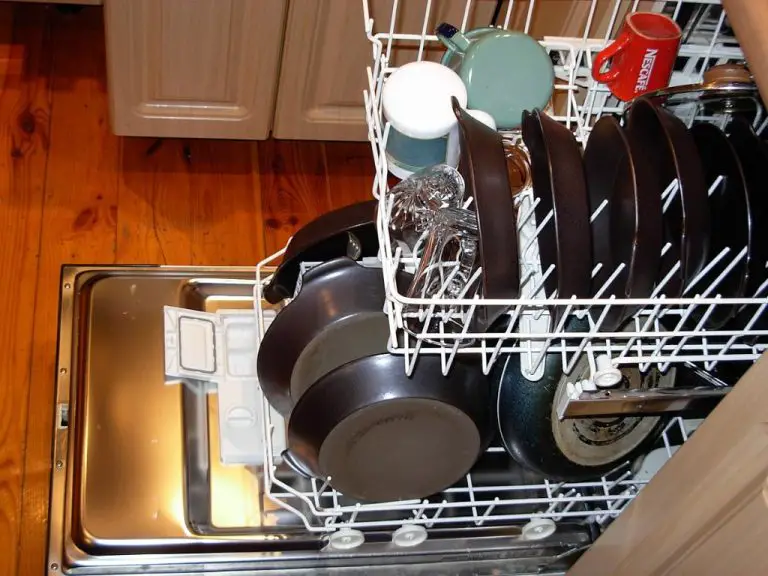What Causes A Power Relay To Go Bad?
A power relay is an electrically operated switch that uses an electromagnet to open or close electrical contacts and control a circuit. When the coil of the electromagnet is energized by an electrical signal, it activates the armature that operates the contacts, allowing current to flow through or interrupting the circuit. Power relays are used in a wide variety of applications to switch electrical loads and signals on and off, acting as remote controlled switches.
Power relays provide isolation between low power control circuits and higher power switched circuits, allowing a small amount of power to control a much larger amount of power safely. They have multiple contacts that can switch multiple circuits simultaneously. Power relays are commonly used in industrial controls, appliances, vehicles, HVAC systems and many other applications to switch lighting, motors, heaters, solenoids, and other electrical loads.
Sources:
https://www.findernet.com/en/uk/news/what-is-a-power-relay-and-its-use-within-applications/
https://en.wikipedia.org/wiki/Relay
Normal Wear and Tear
Relays are electro-mechanical devices that contain moving parts like electrical contacts. Repeated closing and opening of these contacts causes friction, arcing, and mechanical stress over time. As a result, relays have a finite lifetime and will eventually fail after a certain number of operating cycles.
Most standard automotive relays are designed and rated for about 100,000 operations (open/close cycles) before failure occurs from normal wear and tear. However, this lifespan can vary a lot depending on factors like relay quality, contact material, load current/voltage, and operating environment.
High temperatures and frequent operation will accelerate wear. Corrosive atmospheres and high vibration levels can also significantly reduce relay life. Standard tin-plated copper contacts may last 100K cycles, while relays with silver-alloy or gold-plated contacts can sometimes reach 500K to 1 million cycles before failing.
So while automotive relays are very rugged and reliable, their lifetime is not unlimited. The electrical contacts will erode every time the relay turns on or off. With constant switching required in automotive applications, relays do eventually wear out and require replacement due to normal use.
Sources:
Overheating
Overheating is another common cause of premature relay failure. The heat generated in the relay socket by poor contact pressure can travel up the relay pins, causing damage to internal components. As relays heat up, thermal expansion and contraction occurs. This repeated expansion and contraction can weaken or break internal welds, bonds, and connections over time. According to a whitepaper from Sensata Technologies, diagnosing and replacing a damaged relay due to overheating can result in downtime for manufacturing systems and assembly lines.
Sources:
[How to Prevent Solid State Relay Failure](https://www.newequipment.com/learning-center/whitepaper/21271949/sensata-technologies-inc-how-to-prevent-solid-state-relay-failure-with-integrated-thermal-protection)
[Temperature & its effect on Electro Mechanical Relay Operation](https://www.durakool.com/information/technology/temperature-effects-emr-operation/)
Corrosion
Moisture and contaminants can cause corrosion on the terminals and internal parts of a power relay, leading to premature failure. According to this source, exposure to moisture or chemicals can cause corrosion on relay contacts, preventing them from properly conducting current. Corrosion essentially “eats away” at the metal surfaces of the relay over time. Contaminants like sulfur or chlorine compounds can accelerate corrosion. Preventing moisture ingress and chemical contamination is key to avoiding corrosion issues.
As discussed in this relay forum, corroded contacts may simply need cleaning to restore operation. However, severe corrosion can permanently damage the relay. Routine inspection and maintenance can catch early signs of corrosion before it causes failure.
Overcurrent
An overcurrent is a fault condition where the current in a circuit exceeds a preset limit. This excessive current can cause overheating, contact welding and other damage. An overcurrent relay is used to detect overcurrent faults and trip a circuit breaker to isolate the fault.

Most power relays have a current rating, such as 5A or 10A, indicating the maximum continuous current they can safely handle. When the current exceeds this rating for a prolonged period, the coil and contacts get overheated. This causes oxidation and pitting of contacts which increases contact resistance. The high temperature can even melt and weld together the relay contacts.
Sudden overcurrents like short circuit faults can also cause excessive magnetic forces between the relay contacts before they separate. This may bend or weld together the contact surfaces. Welded contacts prevent the relay from opening and clearing the fault.
Frequent overcurrent tripping wears out the relay contacts faster. The repeated heating and cooling cycles during make/break operation causes contact pitting and formation of microcracks. Over time, the contacts become too resistive and may fail to conduct current properly.
Contamination
Contamination from dust, dirt, and debris is a major cause of relay failure. As relays open and close, contaminants can interfere with the contacts, preventing them from closing completely. This can lead to increased resistance and overheating. According to research from Gideon Labs, “Relays are very susceptible to contamination because the leads are made of copper and vulnerable to corrosion and leakage current if not properly sealed.”
Over time, contaminants like dirt, dust, and metal particles build up on the relay contacts. When the contacts try to come together, the particles get in the way and prevent a clean connection. This causes issues like intermittent operation or contact welding. Proper relay maintenance and cleaning is essential to prevent contaminant buildup. However, relays in harsh environments may be more prone to failure from contaminants that inevitably make their way inside the relay.
Vibration
Vibration is one of the common causes of premature relay failure. Relays contain delicate internal components, including electrical contacts and solder joints. Excessive vibration can lead to fretting and wear of the electrical contacts over time. This eventually results in increased contact resistance and intermittent operation. Vibration can also weaken or fracture solder joints inside relays, leading to open circuits and failures
According to a research paper from IEEE (https://ieeexplore.ieee.org/iel5/6413714/6439396/06439413.pdf), vibration can be mitigated by increasing contact gap spacing, armature torque, and use of backstops. Proper relay mounting orientation and isolation from vibration sources can also help prevent premature failures related to vibration.
Manufacturing Defects
Relays consist of many mechanical parts such as the coil, armature, contacts, terminals, and springs. Imperfections in any of these components introduced during the manufacturing process can lead to premature failure of the relay. Some common manufacturing defects include:
Coil windings with poor insulation – This allows short circuits to develop between coil turns leading to overheating and failure.
Weak weld joints – Welds that are poorly formed or weak can break under mechanical or thermal stress.
Contamination – Foreign particles left inside the relay during assembly can interfere with contact operation.
Incorrect contact gaps – If contacts are too close or too far apart, the relay may fail to switch properly.
Warped parts – Components like armatures or contact springs that are warped may not move smoothly or make proper contact.
Poor lubrication – Inadequate or uneven lubrication of moving parts can lead to increased wear and friction.
Out of tolerance dimensions – Critical components like coils and armatures must be precision made or the relay may malfunction.
Most manufacturing defects will result in failure early in the service life of a relay, often shortly after installation. Careful inspection, testing, and quality control during the production process is required to minimize defects. Reputable relay manufacturers adhere to strict quality standards to avoid defects slipping through.
Source: https://automationcommunity.com/most-common-relay-failure-reasons/
Incorrect Application
Using a relay outside its electrical or environmental ratings can damage it and cause premature failure. Relays have ratings for maximum voltage, current, contact load, and other parameters that must be followed for proper operation and longevity (source). Exceeding these ratings exposes the relay to stresses it was not designed for. For example, applying too high of a voltage can cause insulation breakdown and arcing across contacts. Drawing too much current through the contacts causes overheating and contact welding. Operating a relay at temperatures above its rating can affect the coil resistance and reduce magnetic force to open/close the contacts.
Likewise, using a relay in an unsuitable environment can lead to corrosion, contamination, and other issues. A standard electromagnetic relay may fail prematurely if used in a high vibration setting instead of a vibration-resistant relay. Using a non-hermetically sealed relay in a humid, high-salt environment can lead to corrosion and dielectric breakdown over time. Proper relay selection and application according to electrical and environmental ratings is crucial for avoiding these failure modes.
Preventing Premature Failure
To prevent premature failure of relays, it is important to properly select, install, and maintain them. According to a LinkedIn article, How to Extend the Lifespan of Electromechanical Relays, the first step is choosing the right relay for the application. Consider voltage, current, and load characteristics to ensure the relay is rated for the circuit. Overloading a relay will greatly reduce its lifespan.
Proper installation is also critical, as outlined in a discussion on Edaboard, Extending the life of my relay? Make sure to mount the relay securely, provide adequate ventilation if needed, and ensure connections are tight. Orientation is also important, as some relays must be mounted vertically or horizontally per the manufacturer instructions.
According to a guide from Agilent, Maximizing the Life Span of Your Relays, maintenance includes periodic inspection, testing, and cleaning. Check contact resistance and watch for signs of overheating or corrosion. Keep relays free of dust and debris which can impede operation. Follow all maintenance procedures in the relay manufacturer’s specifications.




